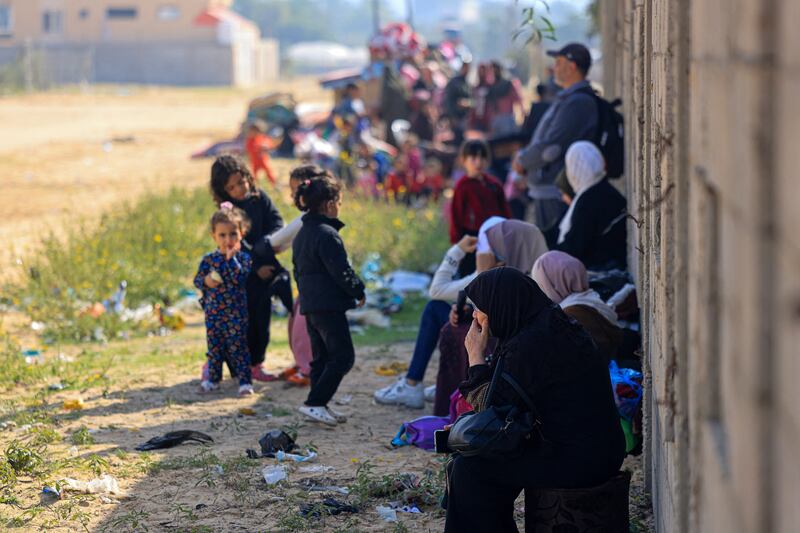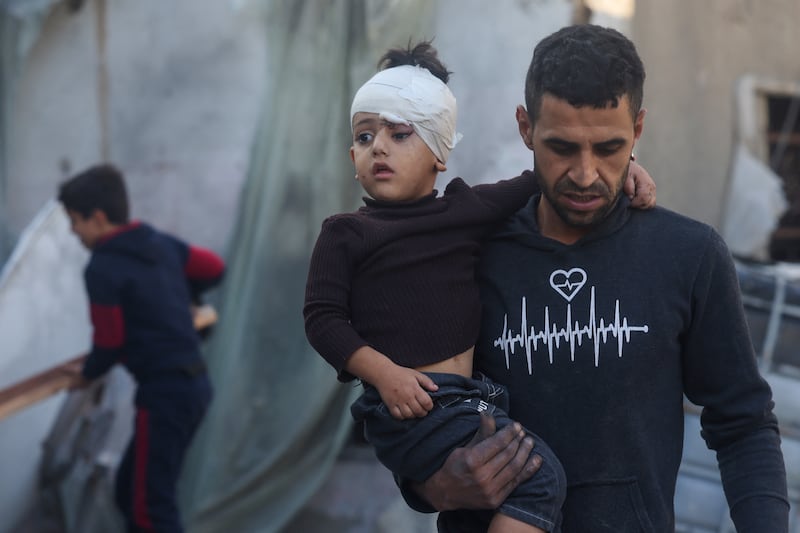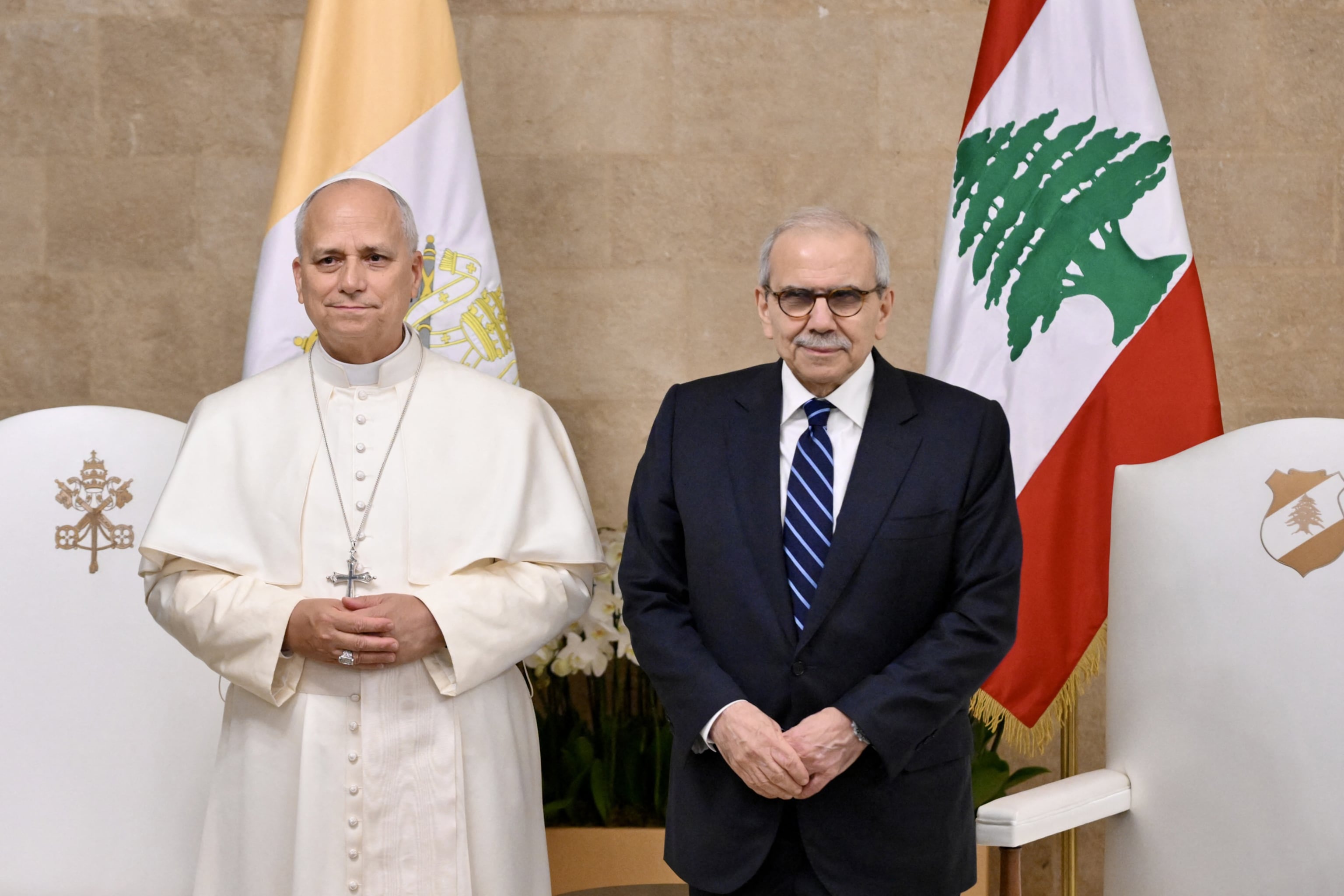The day the truce between Israel and Hamas shattered, Israeli war planes swooped over Gaza to start bombing again.
In Rafah, the furthest edge of southern Gaza before the walled border with Egypt, a man covered in ash screamed to the heavens, begging for mercy. “Where is the world?” he wailed. “Can’t you see two million human beings?”
For the 2.3 million civilians trapped in Gaza, there is nowhere left to run. The border with Egypt is sealed, Israeli forces are closing in from the north and the sea is patrolled by navy gunboats.
As Israeli forces and Hamas resumed hostilities on Friday, the Israel Defense Forces published a map in which Gaza was divided up into 620 separate plots of land, some as small as two football pitches.
READ MORE
Palestinians were told that, when the Israeli orders came, they should move from one block of land to another “for their safety”. Yet it has become clear that nowhere inside the strip is safe.
Some 1.8 million Gazans are now in the overcrowded south, having followed Israeli evacuation orders to navigate a gauntlet of checkpoints, scrambling over shattered roads with their children and few possessions, to make way for Israeli troops taking over northern Gaza.

But Israel has continued to bomb southern Gaza, albeit until recently with less intensity than the north, where its munitions have reduced more than half the buildings to rubble.
Now, after days of hostage-for-prisoner swaps came to an end – the pause in hostilities also enabled hundreds of trucks of aid to enter Gaza – Israel is ready to turn its focus to the south.
On Friday, warnings to Palestinians of imminent air strikes were delivered from the skies, in the form of leaflets that fluttered down from Israeli jets, and of text messages received through a mobile phone network that Israel toggles on and off.
“The IDF will start a crushing military offensive... For your safety, move immediately,” one message warned, listing neighbourhoods to be bombed in Khan Younis in southern Gaza, whose population is already swollen by refugees.
Over almost eight weeks of war, in excess of 15,000 Palestinians have been killed, more than half of them women and children, according to the Hamas-run Gaza health ministry.
More bodies lie in the wreckage, local health officials have said. With temperatures dropping and rain falling, UN officials have warned that diseases are spreading in overcrowded shelters.

Israel’s military campaign was triggered by Hamas’s devastating October 7th attack on southern Israel, which killed 1,200 people, according to Israeli authorities. The militant group that runs Gaza also took about 240 people hostage, some of whom were released over the past week in a swap for Palestinian prisoners.
In Gaza, Israel is now encouraging Palestinians to flee to what it described as a “humanitarian area” – a 14sq km plot on the southwestern coast of the strip.
But senior UN officials have warned that crowding more than 2 million people into an area slightly smaller than Heathrow airport cannot be accomplished unilaterally.
“There is no unilaterally declared safe zone in a war zone,” said Philippe Lazzarini, head of Unrwa, the UN Palestinian refugee agency. “If we want to talk about safer areas, we have to insist on stricter adherence to international humanitarian law.”
At least one million displaced people are already seeking sanctuary in public buildings under the protection of the UN flag. But “this has not prevented more than 200 people [being] killed in our premises”, said Lazzarini.
Hundreds more have been injured in UN shelters. With so many people forced into small areas, more death and displacement is likely if Israel moves on the south with the same intensity as it has in the north, he added.
“The fear is there will also be a staggering number of people who might be killed, especially with this density of population,” Lazzarini warned.
Now Palestinians find themselves under pressure to move again. Om Mohamed Younes (38), fled northern Gaza to the Tal al-Sultan neighbourhood west of Rafah earlier in the war. She has been told she must leave, but she hears bombs “everywhere”.
“Where should we go? How can we live when there’s no food, no water to drink and it’s cold?” she asked, describing her situation as one “that cannot be endured by any human”.

Mai Youssef and her family of 11 are another group that fled south. But the bombs continued to fall, the shops were empty and she has received very little of the aid that the truce was supposed to let into Gaza. Two months into her displacement, she begged either to be let into Egypt, or for the mercy of death.
“Either they open up the crossing for us civilians to leave, or we all die,” she said. “We left in search of safety but we haven’t found it. Death would be a million times more merciful.”
Her pleas touch on a growing fear that the humanitarian crisis will force Palestinians to flee Gaza into Egypt’s Sinai desert. That possibility has been promoted by Israel’s government, but it provokes deep alarm in Egypt.
Abdel Fattah al-Sisi, Egypt’s president, spoke openly in October about his conviction that Israel’s campaign was aimed not at destroying Hamas but at pushing Gazans across the border into his country.
Egypt’s foreign minister told the UN Security Council this week that Israel was trying to drive Palestinians from their land “by making life in the Gaza Strip impossible”.
For many Palestinians, leaving Gaza would only realise their greatest fear: a repeat of the Nakba, or catastrophe, that befell their people when the Jewish state was born in 1948. Some 750,000 Palestinians were forced to flee their homes, and they and their descendants have been refugees ever since.
Many say that fleeing again, like their grandparents once did, is unthinkable. But one Gazan said the unthinkable was upon them.
“Must I choose between death, and a life not worth living?” he said in a text message. “For me, the answer is clear, but I can’t chose death for my children.”
“Help me get out,” he said. “I will be eternally grateful.” – Copyright The Financial Times Limited 2023
















